Harmful algal blooms
An algal bloom is a rapid increase or accumulation in the population of algae in a water system. While most are innocuous, there are a small number of algae species that produce harmful toxins to humans and animals. This section includes articles related to general information about harmful algal blooms and some of their impacts.
Source: Sound Science 2007.
OVERVIEW
Harmful algal blooms in the Salish Sea
Formerly known as “Red Tide”, harmful algal blooms are a health concern for both wildlife and humans. The following is a brief review of some of these algae and their effects.
RELATED ARTICLES
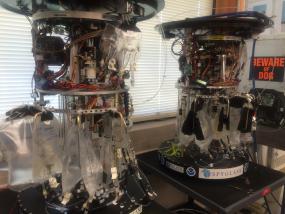
Salish Sea snapshots: Detecting harmful algal blooms
Environmental samplers may provide early detection of harmful algal blooms (HABs) in Puget Sound. This toxic algae is expected to increase as the climate changes, bringing with it new and potentially more severe outbreaks of shellfish poisonings.

Harmful algal blooms in Puget Sound
An algal bloom is a rapid increase or accumulation in the population of algae in a water system. While most are innocuous, there are a small number of algae species that produce harmful toxins to humans and animals.
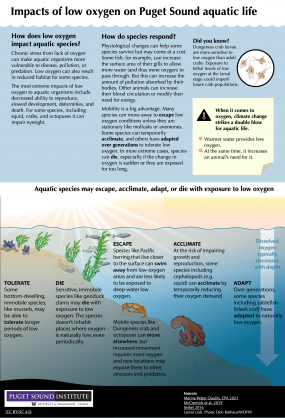
Impacts of low oxygen on Puget Sound aquatic life (infographic)
Chronic stress from lack of oxygen can make aquatic organisms more vulnerable to disease, pollution, or predation. Low oxygen can also result in reduced habitat for some species. Aquatic species may escape, acclimate, adapt, or die with exposure.
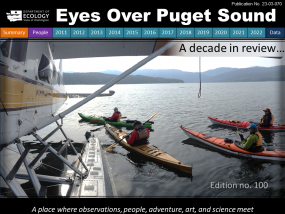
Eyes Over Puget Sound: A Decade in Review
The Washington State Department of Ecology has reached one hundred Eyes Over Puget Sound reports. Since 2011, Ecology has provided aerial observations and documented visible features at the surface of Puget Sound from a floatplane. This unique perspective from the air featured Puget Sound's natural beauty, its oceanographic complexity, and its ecological treasures. It also raised awareness of the challenges that the water body is facing today. Our image-rich documentation of known eutrophication indicators ranges from algal and Noctiluca blooms to macroalgae, jellyfish, and human stressors. It provides a visually captivating time-capsule of issues facing Puget Sound. The report is rich in educational and outreach material, inspired numerous news reports, and drew academic and public attention during the period of marine heat wave of the north Pacific, The Blob.
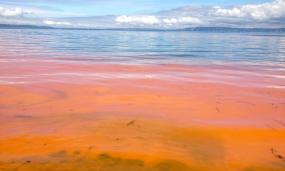
Understanding the causes of low oxygen in Puget Sound
How do excess nutrients trigger low oxygen conditions in Puget Sound and what do those conditions mean for the species that live here?
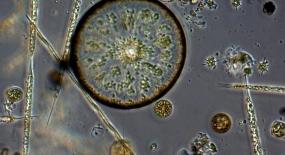
Tiny plankton play a mighty role in the health of Puget Sound
Diverse communities of microscopic organisms called phytoplankton make up the base of the aquatic food web. In that role, they are essential to the tiny animals that eat them, but phytoplankton are not dependent on others. Thanks to chlorophyl, these tiny organisms can generate their own energy from nutrients and sunlight. Despite their critical importance to a great diversity of sea life in Puget Sound, phytoplankton can also contribute to low-oxygen conditions, and some can be harmful in other ways.
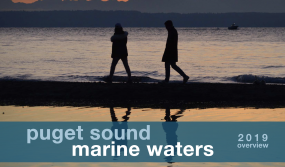
2019 Puget Sound Marine Waters Overview
A new report from the Puget Sound Ecosystem Monitoring Program details the effects of a changing climate on Puget Sound in 2019, and documents how these changes moved through the ecosystem to affect marine life and seafood consumers.
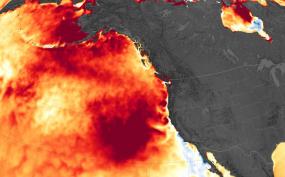
'The blob' revisited: Marine heat waves and the Salish Sea
Years after the appearance of the devastating marine heat wave known as "the blob," scientists are still working to understand how it has affected the Salish Sea. In some ways, they say, it is like the blob never left.
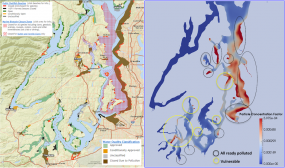
Ecosystem models expand our understanding of the Salish Sea
Scientists are using computer models to address complex issues in the Salish Sea like the rise of harmful algal blooms and the movement of toxic PCBs. LiveOcean, Atlantis and the Salish Sea Model are three systems that are changing the game for ecologists and other researchers.
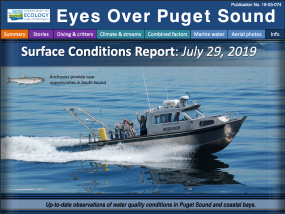
Eyes Over Puget Sound: Surface Conditions Report - July 29, 2019
In July, the recent trends of warm, dry conditions lessened; however, river flows remain low. Extensive macroalgae drifted through South and Central Sound and washed up on beaches. Macroalgae growth is fueled by excessive nutrients and sunshine. When it washes onto the beach, it is called beach wrack, and it can be a health risk to beachgoers because of bacteria it can harbor. From our aerial photography, we saw that Southern Hood Canal looks tropical because of a bloom of coccolithophores coloring the water turquoise. Schools of fish congregate in South Sound and southern Hood Canal. Jellyfish are abundant in Quartermaster Harbor.
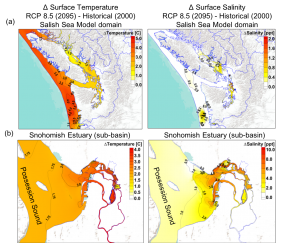
Salish Sea Model looks at climate impacts on the nearshore
A 2019 paper in the Journal of Geophysical Research: Oceans outlines how the Salish Sea Model describes the impacts of climate change, sea level rise and nutrient loads on the region's nearshore environment.

LiveOcean: Pacific Northwest ocean and estuary forecasts
LiveOcean is a computer model simulating ocean water properties in Puget Sound and the Pacific Northwest. It is produced by the University of Washington Ocean Modeling Group and makes three-day forecasts of currents, temperature, salinity and many biogeochemical fields including harmful algal blooms.
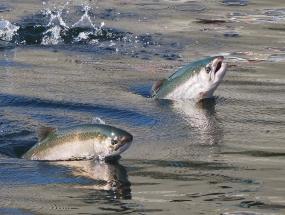
New studies on emerging threats to salmon
Chemicals, disease and other stressors can increase a salmon's chance of being eaten or reduce its ability to catch food. We wrap up our series on the Salish Sea Marine Survival Project with a look at some of the lesser-known, but still significant factors contributing to salmon declines in the Salish Sea.
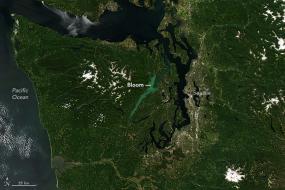
Does Puget Sound need a diet? Concerns grow over nutrients
As the region's population grows, scientists say we can expect to see increasing amounts of nitrogen and other elements flowing into Puget Sound. Known as “nutrients” these elements are naturally occurring and even necessary for life, but officials worry that nutrients from wastewater and other human sources are tipping the balance. That could mean big problems for fish and other marine life, gradually depleting the water of oxygen and altering the food web.
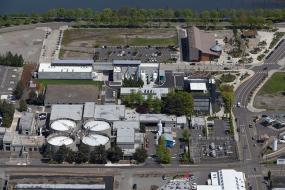
Sewage treatment plant in Olympia a leader in nitrogen removal
A regional sewage-treatment system in Thurston County has helped contain low-oxygen problems in Budd Inlet as the population continues to grow. The system cleans up some of the effluent for replenishing groundwater supplies.
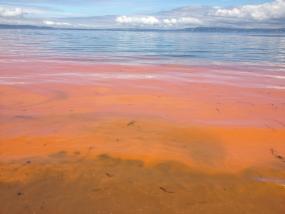
Dead plankton leave clues to a food-web mystery
High amounts of elements such as nitrogen can cause blooms of phytoplankton that sometimes trigger perturbations throughout the food web. This occurs most often in the spring and summer after the long, dark, cloudy days of winter begin to fade.
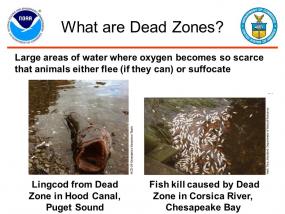
How the state assesses low oxygen in Puget Sound
Under the federal Clean Water Act, states are required to assess the quality of their surface waters and compile a list of polluted water bodies. The law mandates cleanup plans to address pollution and other water-quality problems. This article describes how this process works in Washington state for dissolved oxygen.
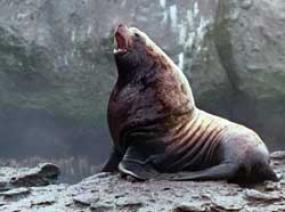
Year-round algal toxin exposure in free-ranging sea lions
Sea lions living along the coast of Washington are at risk from harmful algal blooms throughout the year, according to a 2017 study published in the Marine Ecology Progress Series.
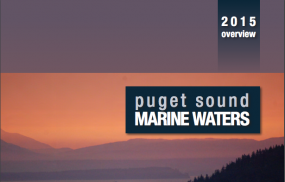
2015 Puget Sound Marine Waters Overview
The Puget Sound Ecosystem Monitoring Program released its fifth annual Marine Waters Overview this week. The report provides an assessment of marine conditions for the year 2015 and includes updates on water quality as well as status reports for select plankton, seabirds, fish and marine mammals.
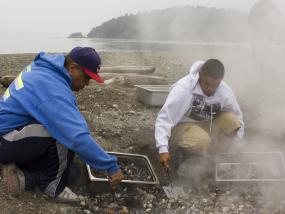
Clam hunger
Social scientists around the Salish Sea are predicting the effects of environmental change through the lens of culturally important foods.
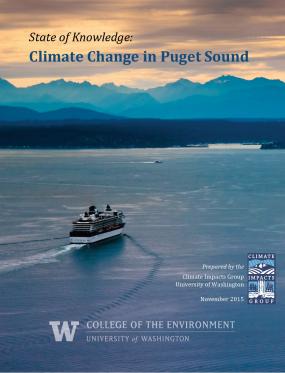
State of Knowledge: Climate Change in Puget Sound
A 2015 report from the University of Washington provides the most comprehensive assessment to date of the expected impacts of climate change on the Puget Sound region.
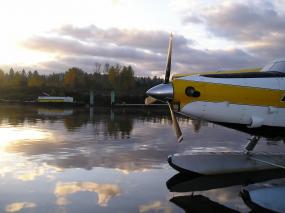
About the Eyes Over Puget Sound monitoring program
Once a month, Washington State Department of Ecology marine scientists take to the air to obtain high-resolution aerial photo observations and gather water data at the agency's monitoring stations and via state ferry transects. This provides a visual picture of the health of Puget Sound, which they call Eyes Over Puget Sound or EOPS.

